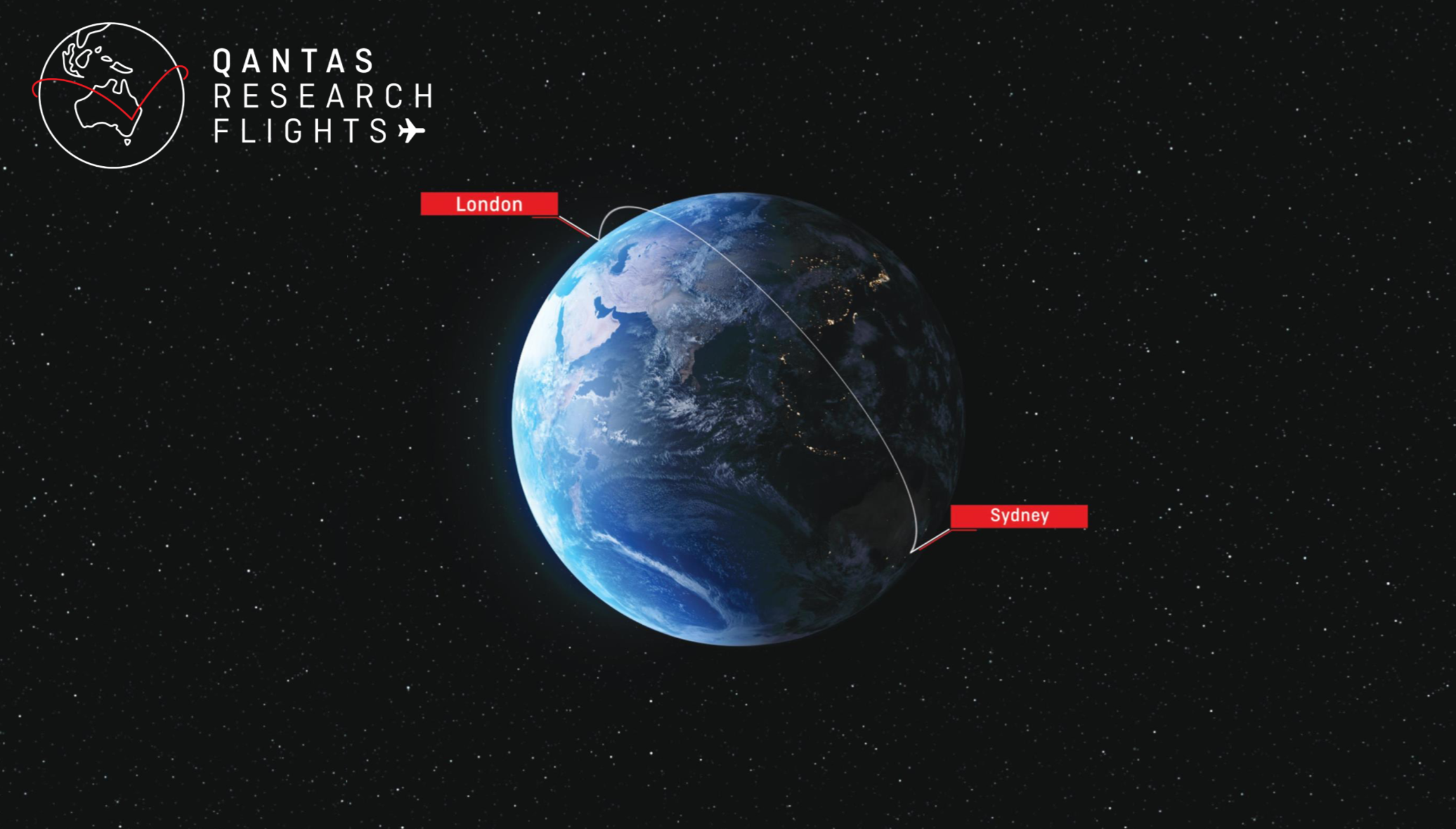Following a successful maiden Project Sunrise test flight, between New York JFK and Sydney, that attracted the world’s media, Qantas is busy preparing for their second milestone non-stop flight.
With aircraft, media and research passengers preparation well underway at London Heathrow on the 13th of November, Qantas is readying for their second London to Sydney non-stop record breaker; this time using a far more modern aircraft.
In 1989 Qantas performed a record-breaking flight between London and Sydney using a Boeing 747-400, registered VH-OJA, with minimum payload and maximum fuel. At the time, the flight took 20 hours and nine minutes to complete.
The advance fuel efficiency on the 787 Dreamliner means the aircraft is taking less than half of the fuel of what the B747-400 did 30 years ago to accomplish London to Sydney non-stop.
Alan Joyce, Qantas CEO
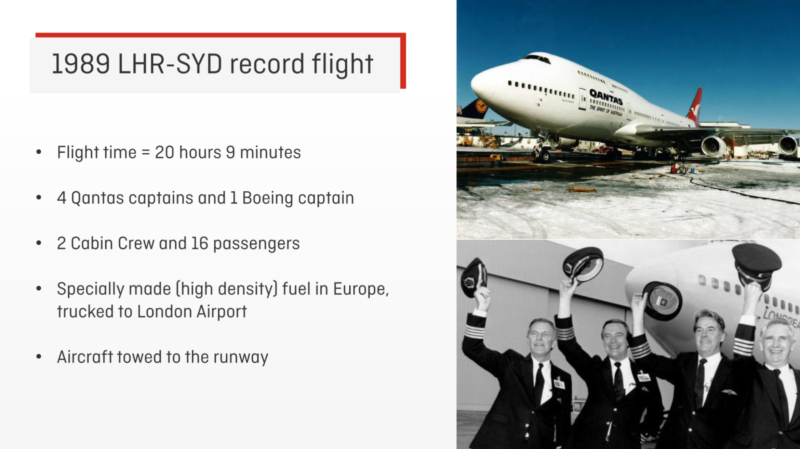
On the 14th of November 2019, Qantas will be operating the exact same flight as the one conducted in 1989; this time using a Boeing 787-9 Dreamliner and modernised, weather-optimised flight plans. Compared to the Boeing 747-400 the 787-9 Dreamliner flight will produce half as much Carbon Dioxide, benefiting the environment.
Thanks to the faster cruise speed of the Boeing 787-9 Dreamliner, and a good set of tailwinds along the way, Qantas estimates that the flight will take only 18 hours 45 minutes to cover the 17,800km distance – 1,500km greater than New York JFK to Sydney.
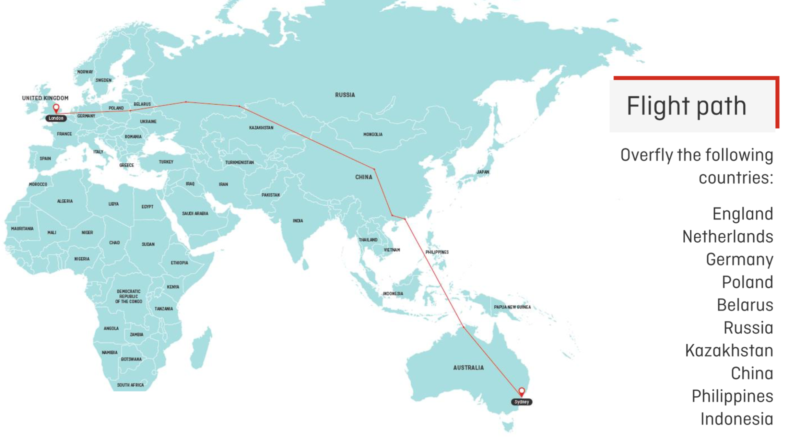
The aircraft, registered VH-ZNJ and named Longreach, features a special Qantas Centenary livery with all the Qantas logos painted on the side, as featured in this article:
Flight Fast Facts
- QF 7879 flight from London to Sydney will take around 19-and-a-half hours, subject to wind and weather conditions on the day. Distance between London and Sydney is 17,800 kilometres (11,000 miles). This compares to a travel time of 22 hours and 35 minutes on the current London to Sydney via Singapore flight.
- The flight will be operated by a brand-new Boeing 787-9 with a special Qantas Centenary livery, registration VH ZNJ, named “Longreach”.
- Four pilots will be on rotation throughout the flight. Two additional pilots will be in the cabin, having flown the aircraft to London.
- The route will depart London and overfly 11 countries including England, Netherlands, Germany, Poland, Belarus, Russia, Kazakhstan, China, Philippines and Indonesia, before crossing the Australian coast near Darwin then tracking across the country before finally descending into Sydney.
- The aircraft will operate with a maximum fuel load of approx. 126,000 litres. Projected fuel remaining upon landing is approximately 7,500 litres, which translates to about 100 minutes of flight time.
- Maximum take-off weight for a 787-9 is 254,000kg. QF 7879 LHR to SYD will depart at a 233,000kg take-off weight; the same amount of fuel that Qantas departs Perth to London flights with.
- Flight will travel at 85% the speed of sound which is around 930 kilometres an hour. Cruising altitude will start at 35,000 feet and then, as the aircraft weight reduces with fuel burn, the cruising altitude will be increased to 40,000 feet.
On board will be 50 passengers/crew including Sam Chui who will be covering various stages of this prestigious event. Six Qantas Frequent Flyers will be taking place in passenger research covering fatigue, bodily functions and comfort.
Additionally, the pilots will be wearing devices monitoring brain performance, sleep cycles, wellness and other critical functions.
Passengers and crew are monitored seven days prior to the flight and will be continually monitored for another 14 days after landing.
The data collected by the University of Sydney’s Charles Perkins Center, as well as the Cooperative Research Center (CRC), will be used to determine Alertness, Safety and Productivity.
CRC have advised the following strategies to combat jetlag. Set the body clock to Sydney immediately after takeoff and sleep first.
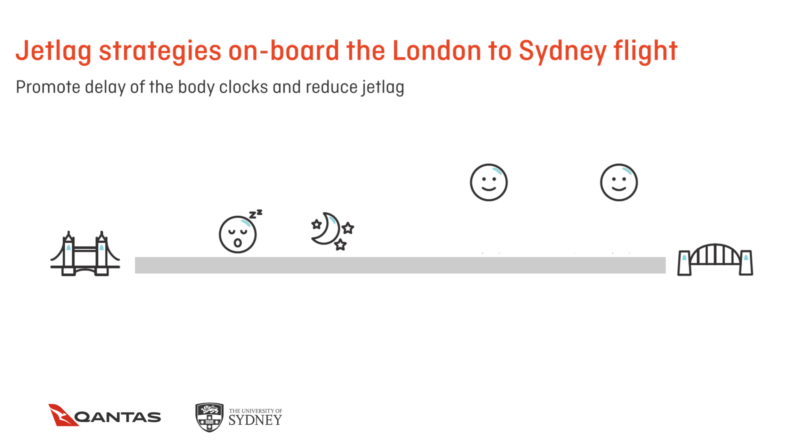
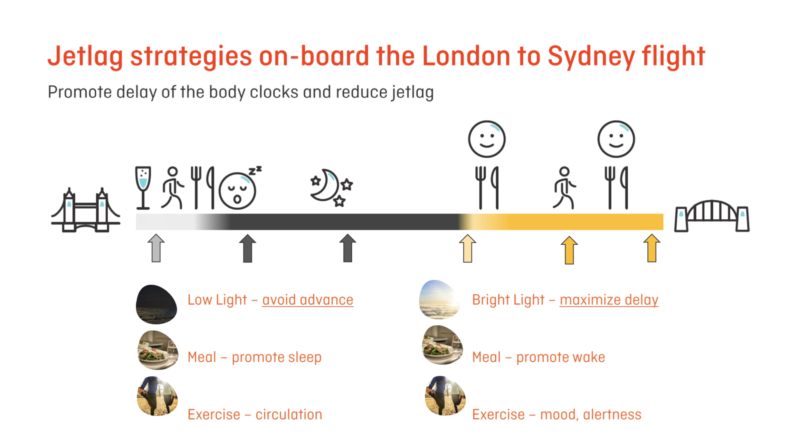
All of the findings from the research flights will be used by Qantas to inform future service and product design, aimed at increasing wellbeing and comfort during long-haul travel.
Qantas will also be presenting the data to authorities such as the Civil Aviation Safety Authority of Australia (CASA) to gain approval for commercial operations between the east coast of Australia and London and New York.
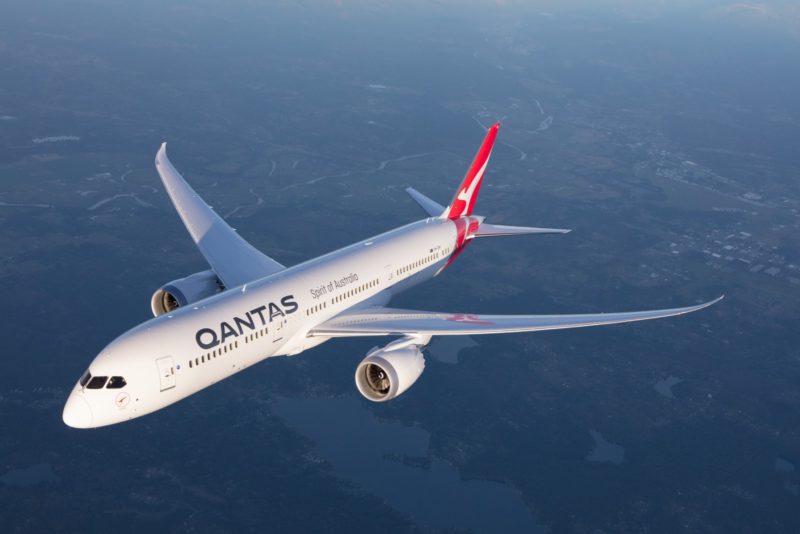
Boarding will commence at 06:00 London time and after takeoff passengers will be offered a range of high GI supper options, such as chicken broth with macaroni or a steak sandwich. Paired with the substantial meal is a glass of wine and a milk-based pana cotta desert.
Cabin crew will encourage passengers to sleep at 10:00 which will allow for a refreshed arrival into Sydney the following day. Cabin lighting and temperature will be used to facilitate this, as well as exercise routines during an awake stage of the flight.
“We know that travellers want room to move on these direct services, and the exercises we encouraged on the first research flight seemed to work really well. So, we’re definitely looking to incorporate on-board stretching zones and even some simple modifications like overhead handles to encourage low impact exercises.”
Alan Joyce, CEO of Qantas
Qantas 100th Celebration
This flight will operate almost 100 years to the day that Qantas first ever flew from the United Kingdom to Australia, taking off from Hounslow Heath (near today’s Heathrow Airport) on the 12th of November 1919. The flight landed 28 days later in Darwin.
| Year | Aircraft | Stops | Flight Time |
| 1947 | Lockheed Constellation | 6 | 55h |
| 1969 | Boeing 707 | 3 | 28h |
| 2019 | Airbus A380 Boeing 787-9 | 1 0 | 22h 20min 18h 8min |
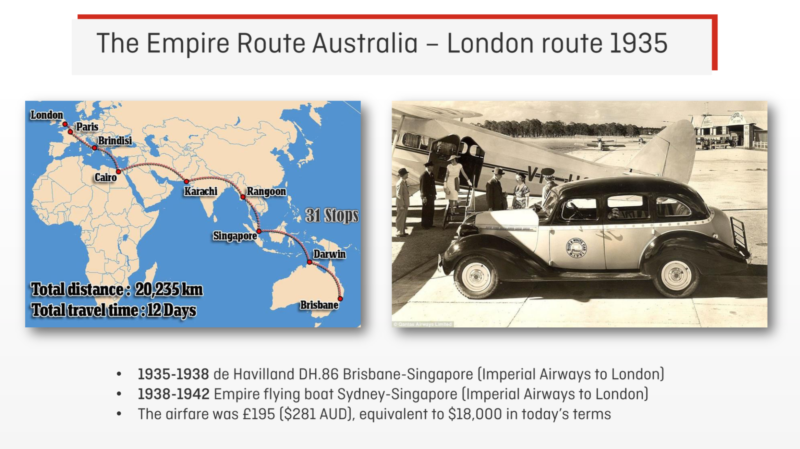
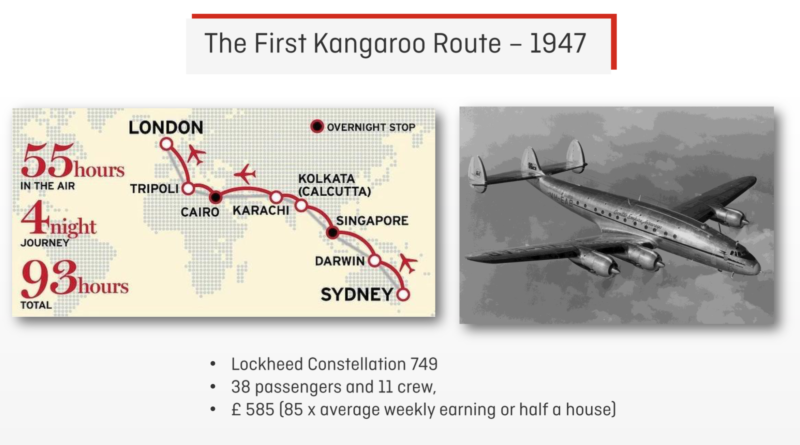

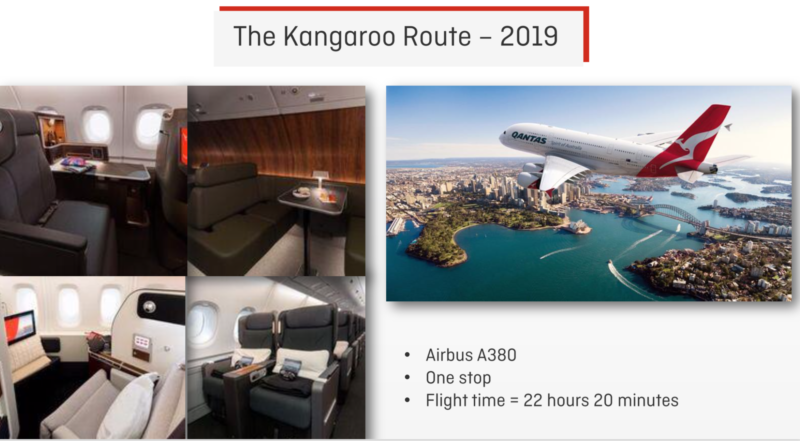
Qantas describes the efforts and the goals of Project Sunrise as “the final frontier of aviation” and if the business case works out, and approval can be earned, flights could be operating as early as 2023.
Despite doubts regarding passenger demand, Qantas’ non-stop Perth to London service has seen passenger load figures hitting 95 percent.
Airbus and Boeing have both pitched their A350-1000 and 777X aircraft to Qantas, in an aggressive race to win the Project Sunrise order that will see records broken in multiple areas.
A decision on the aircraft is expected to be made before the end of 2019, with deliveries planned for 2022.
For more on Qantas’ last Project Sunrise test flight, see this article:


